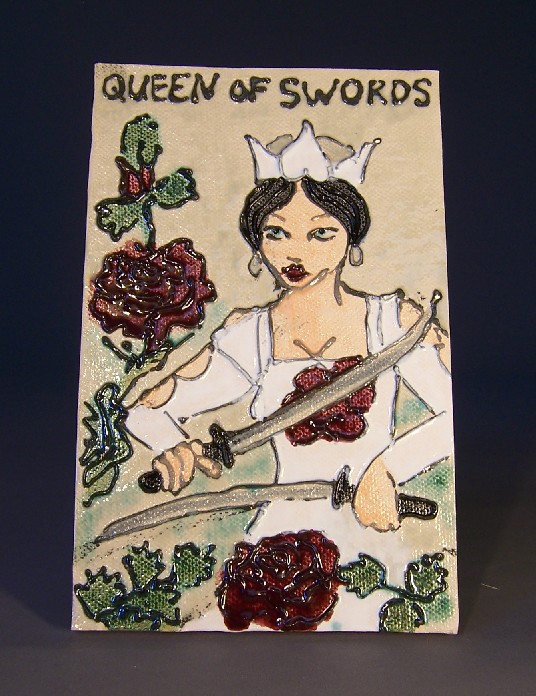
Since I got my kiln working again, I went ahead and glazed the rest of the bisqued tiles from my tarot series. It’s been…let’s say it’s been a learning experience. First of all, I thought that “three even coats” of glaze was a little thick, but if anything, it’s not quite enough. I don’t like the patchiness, and I don’t like that you can see the texture from the canvas (from when they were rolled on the slab roller).
For the black outline, I took some B-Mix (not the right clay for this–more on that later) and I mixed it with black stain. Then I thinned it out and put it into a jacquard bottle to trail the design. Then I bisqued it. This is an imperfect technique for several reasons.
For one, the slip trails don’t always stay level on the surface, which means they can either break off easily or taper to sharp points, or both. Secondly, if the slip is too thin, it spreads out and makes a low, thick line. If it’s too thick, it adheres even less well, and it sometimes clogs the jacquard bottle tip. Thirdly, the fired slip trails have a matte, gray appearance, which means that they really need to be glazed to stand out. They also need to be glazed to adhere them better to the fired work. So, instead of being a border between glaze colors, they become a hinderance.
After I had done about twenty of these tiles (several got lost in a bisque firing mishap) I learned that Duncan sells a product that replicates this effect, only better. Gaah.
